Hiking is a recreational activity that allows us to walk because we want to, not because we have to. The process of hiking is often more important than the destination itself. The reason why we hike varies from person to person. It is a great way to research the nature and it certainly lets you connect with the nature.
Hiking could bring you to the most beautiful places on the planet and put on your path amazing plants and animals. Beaches, deserts, jungles, forests, hills and mountains, there are no limits. Hiking doesn’t require high technological gear. A pair of hiking boots and some basic hiking gear would be enough for you to start with basic daily hiking trips.

The technique of walking is something you have known since childhood and there isn’t much more that you are required to learn before starting. In time it will allow you to deepen your knowledge of the nature and improve your hiking technique. In the easiest form, hiking will represent a small lower body exercise.
But in extreme conditions you will need a greater knowledge and techniques, even though it is “just walking”. Therefore, you need to know why is hiking such a complete lower body workout.
Hiking has been known as an activity that enhances your mood and gets your body in better shape. It is a great body exercise that will in great measure increase your lower body shape. Other than this, it is pleasant that you are able to adjust the speed that you are hiking with and the length of your hiking trip. A lot of people choose hiking as part of their fitness routine.
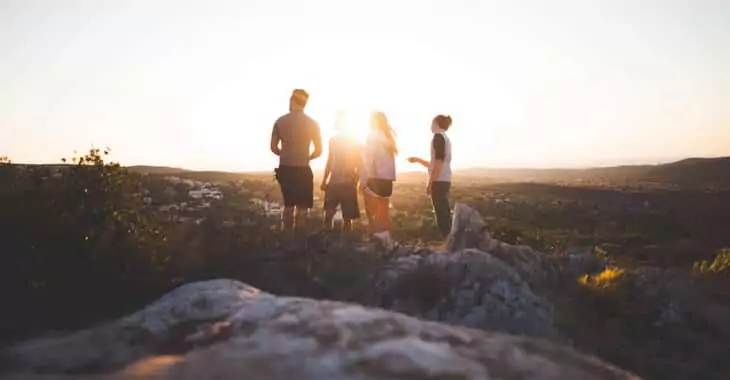
Although, hiking, is not classified as a sport because there is no competition in it, it sure does have a lot of benefits for your body. Hiking however, is not a meaningless wandering around a forest, but conquering a certain destination while enjoying the process on some level. Of course, getting down the hill is also part of the process which is not as easy as it seems. It is activating a whole group of muscles in your lower body. Check out our article on hiking workouts to optimize your body for more information.
And if you decide to use trekking poles, it is also beneficial for part of the upper body as well. It is a way of life that is helping us keep in shape and lead healthier and more fulfilled lives. Being a hiker also means getting to know the beauties of the planet by enjoying the wonderful sights and making new friends. In a way, it represents an active way of relaxation that despite the great effort fills you with strength and personal satisfaction.

Lately, hiking has become more popular than ever. For a group of people, it represents a way of strengthening the lower body muscles and increasing the mobility of the ankles.
Lower body muscles engaged with hiking
Although hiking has a lot of perks for your body, the greatest benefit from it has your lower body. It improves your balance by engaging and strengthening your lower body muscles, therefore creating a positive impact for the whole body. Nevertheless, as with every other activity, you should also start slow with hiking. Start with a local hike that will let you know how strong and prepared your muscles are for the planned hiking trip and work your way up.
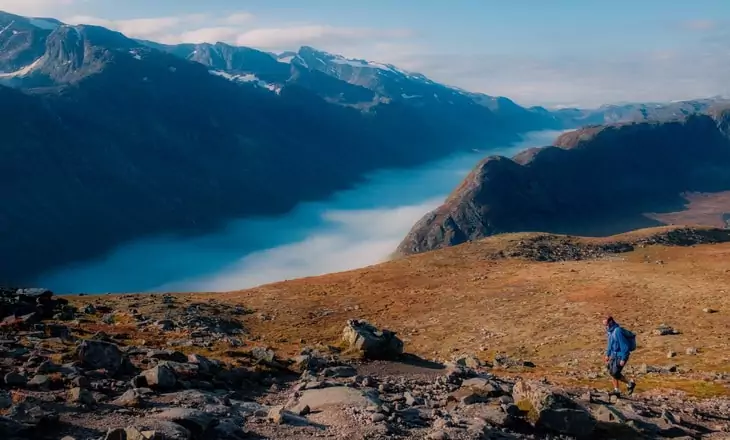
If you feel like you are in need of a greater physical preparation, start with hiking on flat surfaces and work up to uneven terrains and hills. If after months or maybe even years of hiking you feel like you have reached your top shape, try adding some weights to your workout. This would significantly increase the intensity of your hiking and it will also cause you to burn more calories. Read our piece on the types of exercises that prepares your body for the uphill climb to help you.
And if the weather doesn’t allow, or you don’t have enough time at your disposal, make short power walks on an inclination terrain or carry a backpack while hiking. This will help you not lose your shape and keep your fitness level!
Glutes
It is a commonly known fact that hikers have great glutes. It is the perfect exercise for people who have little or no glutes. However, nicely formed ones don’t come without instructions. In order to tighten them up by hiking, you need to add some weight to your workout. This means that it is recommended that you put some more weight into your backpack that will make your body take its “ideal” shape.
However, if you are just a hiker who is looking for the effects hiking has on your body; it is recommended that you read the entire article so that you get an idea what this activity does to your body. Hiking is a cardio activity that if practiced regularly replaces every lower body workout. It mainly targets your legs and glutes and it could replace a whole workout routine.
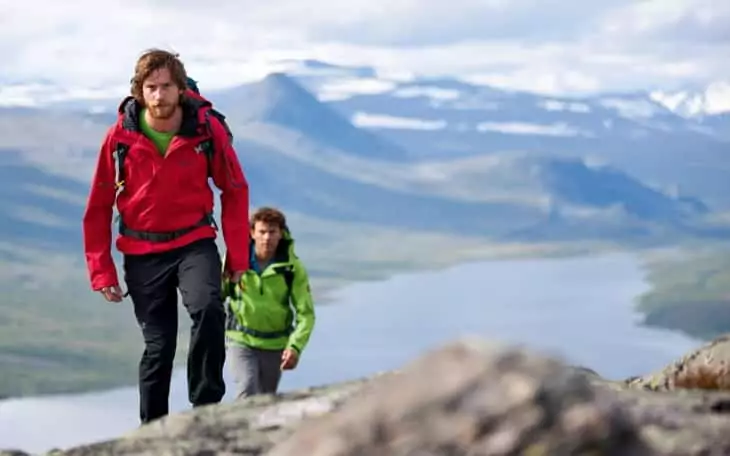
When it comes to exercising your glutes with hiking, there are also variations that depend on the terrain you are hiking on. If you are hiking on a flat surface, keep in mind that this is only a cardio exercise that doesn’t cause much pressure to your glutes. Hiking on an inclined surface, such as a local hill, however, is considered as a glute exercise. This exact type of hiking is replacing your training of these muscles and is helping you shape your lower body.
Quadriceps
Long hikes take some preparation. Besides the gear that you are going to prepare few days ahead, your body will need weeks for doing so. Even though, hiking doesn’t require you, climbing high mountains, a long walk on the hill is not an easy task. Most hikers are aware that the climbing up the hill will be hard.
However, they forget that the hiking doesn’t end there. You will need to get off the hill by hiking as well. Here comes the soreness. Quads are the muscles that are usually engaged in this process. If you don’t have strong quads, you might experience some soreness the next day.
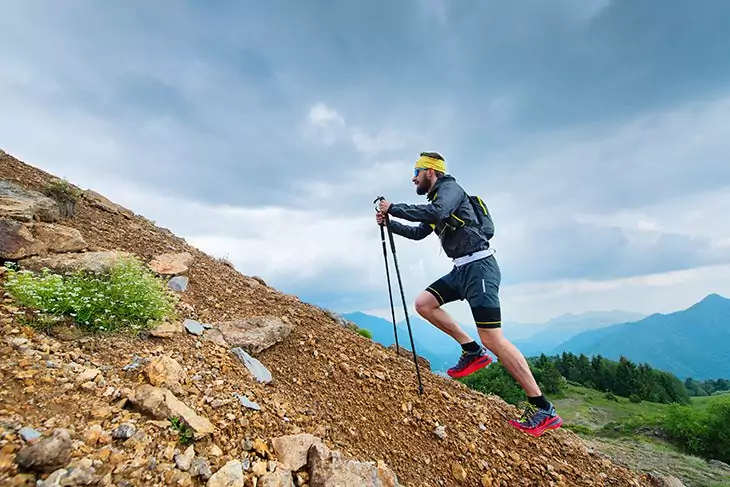
Even though it is not a big deal, it is recommended that you prepare yourself for avoiding this. For doing so, you will need to do some downhill lunges that will get your quads in shape in just a few weeks. If you are not a fan on small workouts, maybe try some shorter hikes before embarking on a long hiking adventure.
Calves
Even though calves are more frequently connected with mountaineering than hiking, it all depends on the weight of the load you are carrying. If by any chance you are carrying a heavy load on your back, your calves will get engaged a lot, even though the inclination of the hill is small. For this reason, the need for strong calves as well as strong ankles goes for hiking as well.
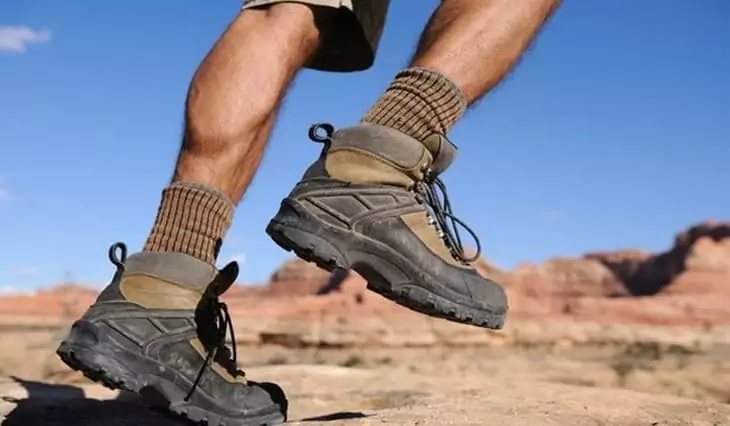
If you are in doubts whether your calves are ready for the hiking trip you are planning, there are some tests you can do that will allow you to assess their strength and flexibility. For doing the test you are going to need a small block that you should step on. Your toes should be on the block, while your heels are in the air. The entire weight of your body should be supported by the front of your foot.
After this, drop your heel down as much as you can until you feel like your calves are stretched. You should be able to do at least 3 sets of 20 reps. In order to see if one calf is more strong than the other perform these stretches separately on each leg. If you notice that one calf is weaker than the other, pay attention to this and perform some extra exercises.
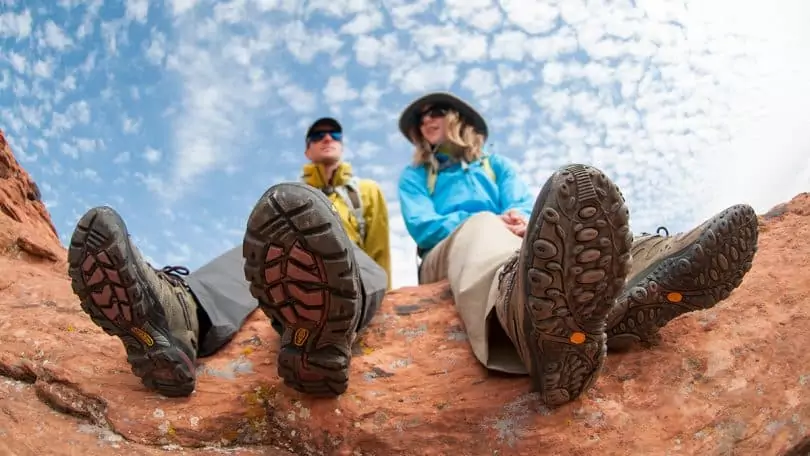
If you want to get your calves in top shape, you could do this exercise with a heavy load on your back. However, keep in mind not to train your muscles too tight since you will cause an opposite reaction.
Hamstrings
Hamstrings are the obvious engaged muscle group while hiking. However, stronger hamstrings would also allow you to carry a heavier load with ease. The heavier your backpack is the stronger hamstrings you are going to need. The terrain also plays a great role in engaging your hamstrings. There are some terrains that cause fatigue of this group of muscles whiles others not at all.
For this reason it is recommended that you make a good research on the type of terrain you are going to walk on and check if you are up to the challenge. If the hiking trail is softer, the weight of the heel will cause your heels to sink in the trail. This in return, causes pressure to your hamstrings.
If you feel like you are not ready for the long hike coming ahead of you, make sure you prepare your hamstrings with some basic exercises few weeks before the hike. If you have any doubts in your abilities, pay more attention to your every step since weak hamstrings cause injuries because of unstable stepping. The perfect ways to train these muscles is by walking on your toes as often as possible or simply do some chair walks.
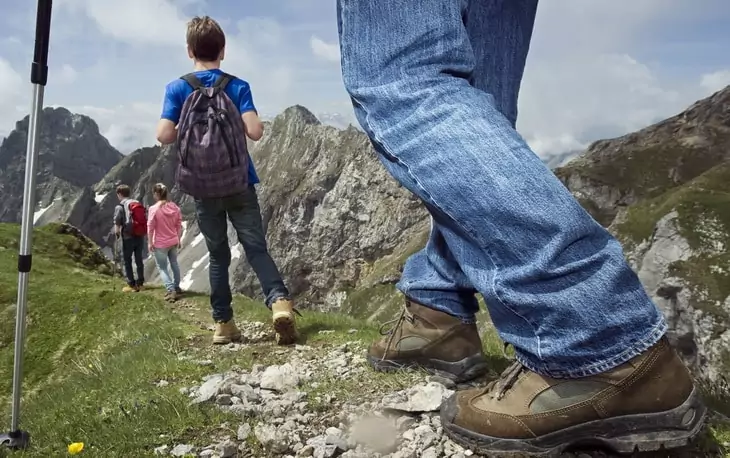
Chair walks are when you are sitting on a desk chair and you are walking around the room. When doing so, be careful not to move your whole legs, but engage only your feet below the ankles. This will strengthen your hamstrings and will get you in shape for the hike in no time!
Lower back
If you haven’t exercised for a long time, but you are planning a hiking trip, the lower back is the main muscle group you should be worried about. When carrying a heavy load, or a light load on long destinations, it causes pressure on your lower back. This could create pain while you are moving, or it could make your back sore the next day. In extreme situations, it might even cause you an injury.

For this reason, your lower back should be in top shape for hiking. In winter months, many hikers are taking a break from their hiking trips and in the spring, when the temperatures drop, they are continuing where they left off. However, this is the main reason why injuries occur. In order to avoid this, you must first strengthen your muscles by performing some exercises or taking small hikes.
For strengthening your lower back it is recommended that you make small day hikes with a heavy load, in order for your lower back to get used to the weight. Or you could do some squats with your backpack on your back. Even though this exercise targets mainly the hamstrings, it is beneficial for the lower back as well.
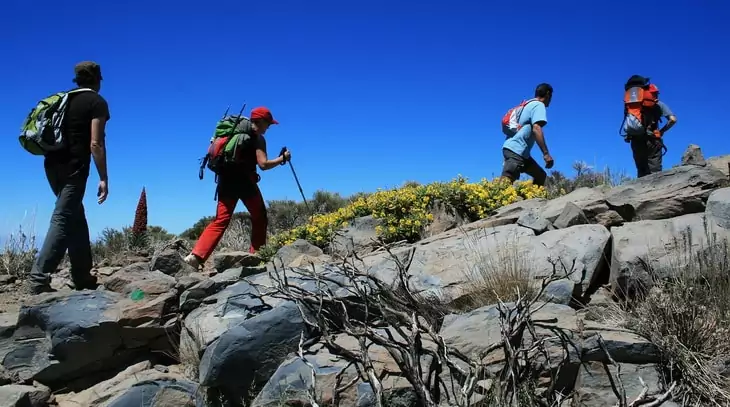
For lowering the chances of an injury or muscle soreness while hiking with a heavy backpack, it is also recommended that you do some abdominal exercises. This will strengthen your core which will influence your entire posture; therefore, your lower back will be under lower pressure.
Thighs
The outer thighs are greatly engaged when walking downhill. Even though this pressure could be avoided, most people are leaning backwards when walking downhill, which causes pressure on your outer thighs. However, this is also the safer position that allows the hiker to walk slower on the declined surface. If your thigh muscles are weak, the increased pressure could cause injuries to your hips.
Needless to say, you should also prepare your thighs if you are planning a big hiking trip. For doing so, you will need two types of exercises that will engage your inner as well as outer thighs.
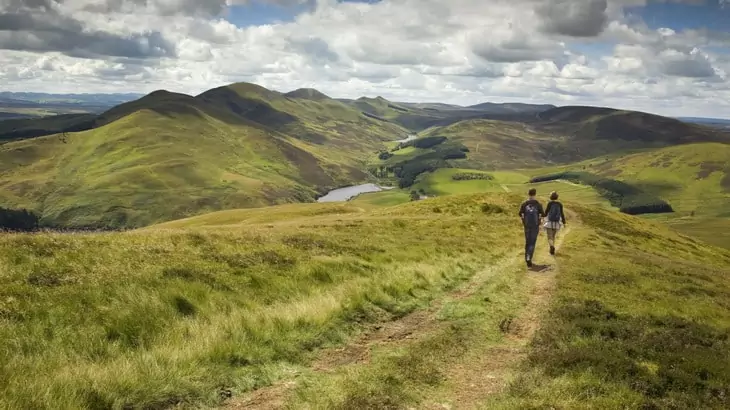
The inner thighs are engaged when you go off the trail. Even though we are planning to hike to our destination by following a predetermined trail, this is not always the case. If the trail is somehow deranged or you prefer to take a shortcut, you could go sideways in order to get to your destination on time.
By doing so, you will pass many rocks, mud and uneven terrains. Nature is unpredictable! However, our bodies are very predictable and it is known that your inner thighs will be engaged with every side movement you make.
If you want to strengthen your thighs before a long hiking adventure you are planning, do some side hops. Side hops are done by placing two towels on a distance wide enough so that when you spread your legs, you won’t be able to reach them. After doing so, hop from the one towel towards the other by spreading one leg first and the other should follow. Do 3 sets with as many reps as you can.
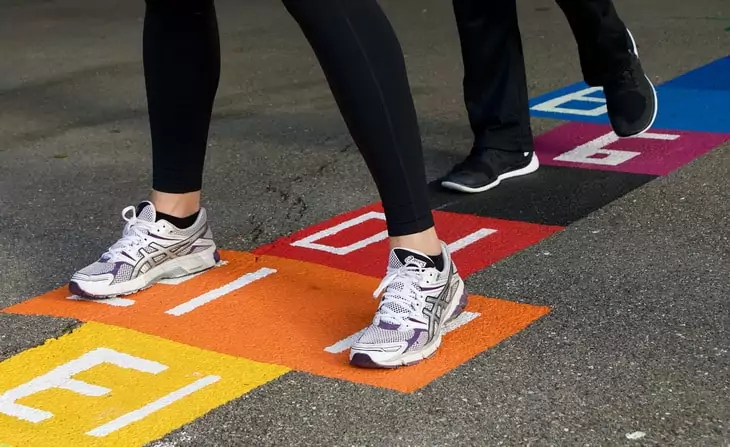
The hopping is not recommended to be done with weighs because it might cause damage to your ankles and knees. If you prefer exercising with a backpack on your back and simulating real hiking conditions, set the towels at a reaching distance. Then try moving one leg towards the towel and squat instead of hopping. This is called side squat, which is much safer when weights are included.
Replacing your lower body workout with hiking
As you can notice, hiking engages and it is keeping in shape all of the muscles on the lower body. For this reason, people who have the possibility to go on daily hiking trips should take advantage of this opportunity and maybe consider exchanging the gym with simple hiking. This is extremely beneficial for the body, especially in the warmer months since your lower body muscles will get stronger and your body will intake a lot more oxygen than your training sessions at the gym. Ensure your safety by reading our piece on how to choose hiking boots that you can use for your trip.
And for those of you who are asking themselves if you would be able to get mass and definition of your lower body through hiking, this article answers that question for you. It is important to notice that for more muscle definition, you should carry a heavier load on your back while hiking. Even though this might not feel as pleasant, it will get you some great results that you will begin to notice after just a few weeks of hiking.
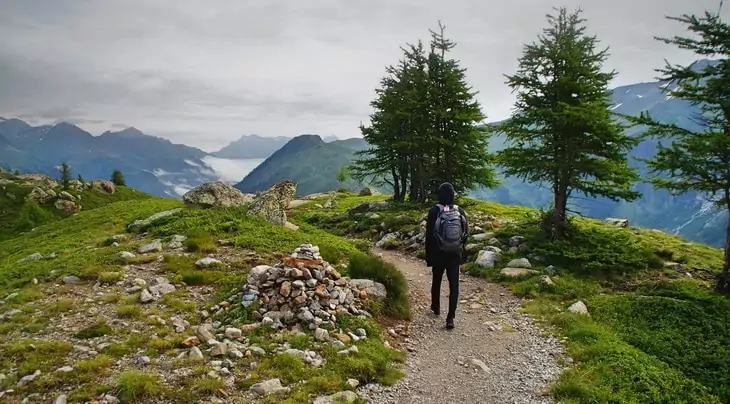
Also keep in mind that gaining muscle definition also comes from eating. However, the main part of muscle definition is reducing your body fat, and hiking is more than good for doing so. It is a cardio exercise that allows you to cause a progressive overload to your body and increase your muscle mass. If after hiking for a few months you feel like you need to strengthen some muscle group more than it already is, you could always add some weight exercises.
Final thoughts on this topic
Some people consider hiking as a starting point of many sports and activities in the nature. It is a daily activity and hiking through different weather conditions and terrain is quite the challenge, for your body as well as the soul.
However, we all enjoy it because it is a great lower body exercise that allows you to escape the crown and stress that are present in our daily lives. Regardless of whether you are hiking with a group, or you are hiking solo, hiking experiences are unforgettable and they enrich your life!
Before you leave for your camping trip, make sure to check on our earlier piece on tips and guidelines for hiking safely.
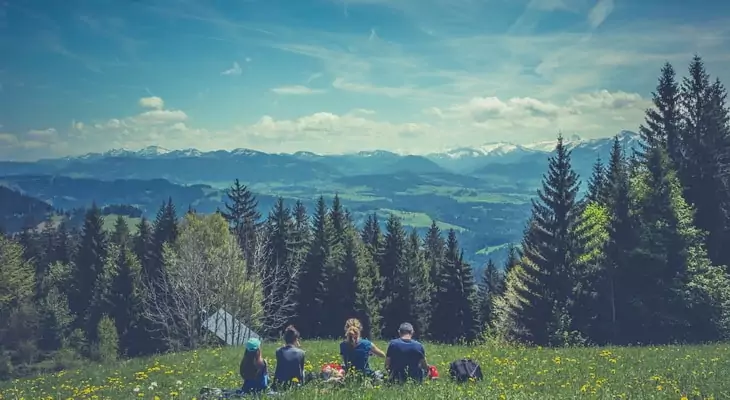
If you have something to add on the hiking subject and how it has helped you get in shape, share with us in the comment section bellow!

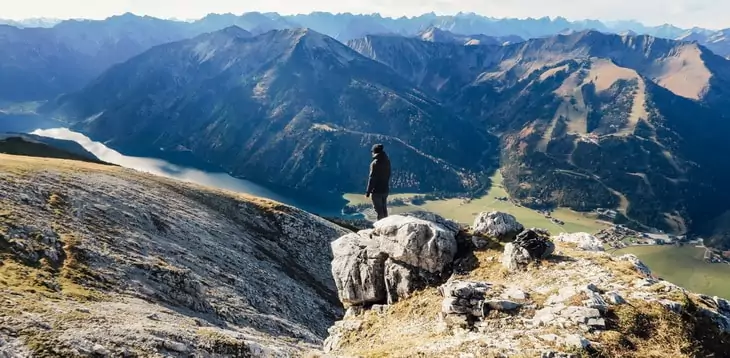
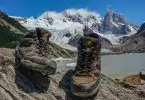





I’m looking into hiking as a daily exercise to strengthen my legs as I live next to a ravine. I’ve also heard about using these protein shakes to help my body. How do I use these?
Find out how much protein you need in a day because each body is different. From there, you can dose out the protein to what you need. You can mix this in a shake, smoothie or in your water!
This article covers a really important part. I have a lot of experience in similar type of injuries. Can you suggest some sprays which we can use for cramping?
Try CrampZ